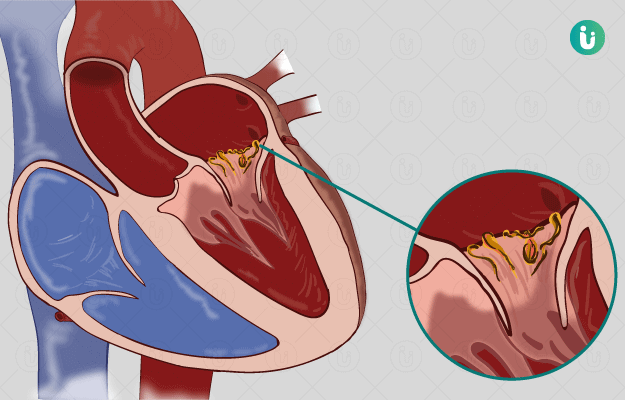BACTERIAL ENDOCARDITIS

What is bacterial endocarditis?
Bacterial endocarditis is the infection of the layer of cardiac tissue called the endocardium or endoarterium. It is caused when bacteria infect heart valves (both native and prosthetic) and cause vegetations to form. These vegetations can break off, get pumped into the circulation and get lodged in blood vessels blocking blood flow to tissues downstream (embolization). These little vegetations and vessel occlusions can cause cutaneous manifestations of the disease. Symptoms of bacterial endocarditis are generalized and include fever, chills/sweats and weight loss. Cutaneous signs of endocarditis include:
- Osler nodes: Palpable, tender nodes in the pulp of the fingers. They appear red, hemorrhagic (bruise-like) and infracted (no blood flow). Occasionally, they are white in the center.
- Janeway lesions: Red, flat or raised, non-tender lesions located almost always on the palms or soles.
- Septic embolism: Painful, hemorrhagic macules, papules or nodules, usually on the tips of fingers or toes.
- Subungual Splinter hemorrhages: Linear hemorrhages in the middle of the nail bed.
- Petechial lesions: Small, nonblanching, reddish-brown pinpoint spots. These occur on the extremities. Nonblanching means that they do not whiten when pressed on.
- Roth Spots: A white spot in the retina close to the optic disc, often surrounded by hemorrhages. An opthalmoscopic is exam is needed to visualize these lesions.
- Gangrene of extremities: This is secondary to embolization and blockage of blood supply.
- Embolization with infarction: Symptoms of this vary depending on the organ affected.
- Neurologic complications: These can occur due to emboli that compromise blood supply to the brain.
What causes bacterial endocarditis?
Bacterial endocarditis is caused by bacterial adherence to damaged heart valves. This can occur on both native and prosthetic heart valves.
How is bacterial endocarditis treated?
Preventative treatment measures are taken in patients with known risks such as prosthetic valves. These patients are given antibiotic therapy prior to certain procedures that increase their chance of getting a blood infection, such as dental procedures. Once the diagnosis of bacterial endocarditis is made therapy includes intravenous antibiotics and in severe cases surgery for valve replacement
Read more: http://web.archive.org/web/20120421144047/http://www.webmedlit.com/conditions/bacterial-endocarditis#ixzz6J8DoskLx
References:
Wolff K, Johnson, RA. Fitzpatrick’s Color Atlas and Synopsis of Clinical Dermatology. Sixth Edition. 2009.
http://emedicine.medscape.com/article/911900-overview


